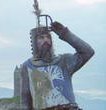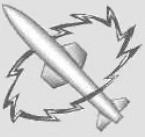Ron Saueracker
Posts: 12121
Joined: 1/28/2002
From: Ottawa, Canada OR Zakynthos Island, Greece
Status: offline

|
Haida is in as a Taney but is a Modoc 240' Cutter. Guess this was done due to shortage of slots?
Haida, 1921
WPG-45
--------------------------------------------------------------------------------
North American Indians inhabiting the Queen Charlotte Islands, British Columbia, and parts of Prince of Wales Island, Alaska. They also inhabit Dall Island, Long Island and other islands in the southern-most areas of the Alaskan panhandle.
--------------------------------------------------------------------------------
Builder: Union Construction Company, Oakland, California
Length: 240'
Beam: 39'
Draft: 13' 2"
Displacement: 1,506 tons (trial); 1,955 tons (1945)
Cost: $775,000
Commissioned: 26 October 1921
Decommissioned: 13 February 1947
Disposition: Sold, 20 January 1948
Machinery: 1 x General Electric 2,040 kVa electric motor driven by a turbo-generator; 2 x Babcock & Wilcox, cross-drum type, 200 psi, 750° F superheat
Performance:
Maximum speed/endurance: 16.2 knots on trial (1921)
Maximum sustained: 15.5 knots, 3,500 mile radius (1945)
Economic speed/endurance: 9.0 knots @ 5,500 mile radius (1945)
Complement: 14 officers, 2 warrants, 80 men (1945).
Electronics:
Detection Radar: SA; SL
Sonar: QCJ-3
Armament:
1921: 2 x 5"/51 single mounts; 2 x 6 pounders; 1 x 1 pounder
1942: 2 x 5"/51 single mounts; 1 x 3/50 (single); 2 x .50 caliber machine guns; 4 x "Y" guns; 2 depth charge tracks.
1943: 2 x 3"/50 single mounts; 4 x 20 mm/80 (single); 2 x depth charge tracks; 4 x "K" guns; 2 x mousetraps.
--------------------------------------------------------------------------------
Class History:
by John Tilley
The four 240-foot cutters were conceived as the first true "multi-mission" Coast Guard cutters, equipped for police work in territorial waters, ice patrol, search and rescue, derelict destruction, and towing. Each ship had a remarkably heavy armament of two 5-inch guns, with a provision for the wartime installation of a third, and a 3-inch anti-aircraft gun. A turbo-electric drive system gave the cutters a top speed of sixteen knots, which seemed plenty for the Coast Guard's peacetime missions. The four ships were built by the Union Construction Company of Oakland, California. The entry of the United States into the Second World War sent the Coast Guard on a search for hulls that could be turned into convoy escorts. The 240-foot cutters were fitted out with depth charges, additional guns, sonar, radar, and any other gear that could be crammed into them. The Modoc and two of its sisters, Mojave and Tampa, were assigned to the treacherous Greenland Patrol; the fourth ship in the class, the Haida, spent the war in Alaskan waters. All four were decommissioned and sold in 1947.
Additionally, Robert Scheina notes that:
"The 240-foot cutters followed the traditional cutter hull form, having a plumb bow and counter stern. These features proved particularly undesirable while on International Ice Patrol. Heavy seas coming up under the counter caused severe shocks. The wardroom in this class was well forward; thus, the deck sloped upward. This feature was known as the 'Honeywell Hill,' in honor of the principal architect of the class." (1)
--------------------------------------------------------------------------------
Cutter History:
The Haida was laid down on 27 September 1920 at the Union Construction Company of Oakland California. She was christened by Mrs. Frank G. Law when launched on 19 April 1921. She was then commissioned on 4 October 1921 under the command of Lieutenant Commander John F. Hottel. She then sailed to the Mare Island Navy Yard to receive her armament.
The Haida was first stationed at Seattle, Washington and began a peacetime career on the annual Bering Sea Patrols. She first sailed to Unalaska, the headquarters for the Patrol, and then sailed on her assigned tasks, which included acting as a floating court for the inhabitants of the isolated areas she sailed, caring for the sick, conducting search and rescue activities, checking on aids to navigation, regulating fisheries, and other duties. With Prohibition being the law of the land after the passage of the Volstead Act in 1919, the Haida and her sister cutters became the main enforcement arm of the federal government's effort to prevent liquor smuggling at sea, thereby adding another duty to an already full plate. The Haida apparently had little luck in stopping any smuggling but nevertheless continued to carry out her other tasks. In 1924 Haida, in concert with the cutter Algonquin, sailed in support of the U.S. Army's World Flight, the first attempt to circumnavigate the globe by air. (2)
On the night of 22 May 1928 the Alaska Packers' Star of Falkland ran aground and called for assistance. The Haida, Unalga, and the Lighthouse Service tender Cedar responded. Using her boats the Haida's crew began rescuing the survivors. In the end the Cedar rescued 250, the Haida 47, and the Unalga 5. Another notable search and rescue case occurred when the steamship Victoria grounded off Pointer Island, British Columbia on 30 December 1934. The Haida stood by the grounded vessel after reaching the scene on the 31st, ready to assist if needed. Before a rescue attempt could be made, however, the weather conditions worsened. Fortunately as the weather cleared on 2 January 1935 the Victoria was refloated and made port safely. In December of 1938 the Haida once again went to the rescue, this time to save the shipwrecked survivors of the Patterson, which went aground and was smashed "to pieces" near Lituya Bay. The Haida's rescue party managed to hike to the survivors' campsite which was well away from the shore. Each of the 21 survivors was suffering from exposure and hypothermia but all were safely escorted back to the shore, where the Haida's launch got them to the cutter. (3)
On 7 December 1941 the Haida was at the Puget Sound Navy Yard undergoing repairs. The work was completed in January, 1942, and she departed Port Townsen on 13 January. On 16 January, while leaving Grenville Channel en route Ketchikan the Haida assisted in trying to float the USAT Branch aground for many days at Hamer Island, B. C. but after pulling unsuccessfully with the CGC Hemlock on the 17th, she transported some soldiers to Prince Rupert, leaving the Branch to salvage underwriters. Arriving at Ketchikan 20 January 1942 she began escorting the SS Columbia and the USAT Gorgas in Icy Strait on the 23rd, arriving at Kind Cove on the 29th. The Haida later escorted the Gorgas to Cape Decision. On February 21st she was escorting the SS Yukon across the Gulf of Alaska, mooring at Juneau. Departing on the 27th she started escorting the USAT Chas. L. Wheeler to Seward, but returned to Icy Straits because of heavy weather.
On March 10th she arrived at King Cove and went to the assistance of the Mount McKinley ashore 1-1/2 miles west of Scotch Cap. The Yukon and Hattfield were standing by off shore but unable to communicate with the stranded vessel and heavy seas prevented a close approach. On the 12th it stopped snowing and 127 passengers, officers and crew were observed pulling seaward in five lifeboats, all being safely rescued and landed at Dutch Harbor. Departing for Akutan with officers and men from the Mount McKinley on 11 March 1942, she intercepted a message from the YP-86 in distress off North Head, Akutan Island. She led the YP safely in Umnak Bight on the 15th, removing machine guns and platform from over the pilot house to stabilize her. On the 16th she convoyed the YP to Dutch Harbor. On the 22nd the Haida returned to the Mount McKinley to salvage such stores and equipment as she could but weather conditions prevented her and she returned to Dutch Harbor.
On March 23rd, 1942, the Haida escorted the USAT Delaroff to Nikolski on Umnak Island and on April 14th accompanied her on trip to Chernofski and return. On the 30th she contacted the USAT Goldbrook off Chernofski and escorted her and the Delaroff past Unimak Pass towards Seattle. On May 1st the Haida escorted the SS Aleutian to Cape Pankof. On the 18th she called at Sitka and loaded 32 tons of torpedoes and ammunition for Women's Bay, then, still heavily loaded, escorted the USAT North Coast to Cold Bay, returning to Dutch Harbor. She helped search for a submarine on the 27th and then proceeded to Chernofski to patrol and guard merchant shipping until June 3rd.
Returning to Dutch Harbor on the 12th she escorted the USAT Downey to Otter Point guarding her as she unloaded aviation gasoline. Reports on the Haida during latter part of 1942 are partially missing. From 23 to 29 August 1942, she escorted vessels off the Kenai Peninsula, eastward to Seward.
During the week ending October 17th, 1942, she escorted 16 merchant vessels between Yukitat, Women's Bay, and Pleasant Island. After escorting six vessels with one naval escort to Pleasant Island on 26 October 1942, she proceeded to Juneau and returning to Pleasant Island on the 28th, she escorted six vessels to St. Paul Harbor. During the week of 28 November 1942, she escorted convoys west of Cape Spencer, Pleasant Island and St. Paul, heaving to off Kodiak Island on 1 December 1942., to escort the SS North Pacific to Kodiak, following which she escorted her onward to Pleasant Island. Returning to Juneau she departed for Pleasant Island on the 12th to escort two vessels to Seward where she arrived on the 14th departing the same day to escort a vessel to St. Paul arriving on the 15th. On the 20th she escorted vessels to Juneau, arriving on 26 December 1942.
On 1 January 1943, the Haida arrived at Seattle where she remained in overhaul status until 23 February 1943. After tests the next day she proceeded to Port Angeles where she began escorting a convoy to Alaska. Intensive training was carried on en route and on March 14th she anchored at Cold Bay, reporting to Commander, Alaskan Sector for duty. On the 5th while escorting a vessel to Dutch Harbor she expended two depth charges on an underwater contact with negative results. The remainder of March was spent in escort duty between Dutch Harbor and Chernofski, guarding a cable ship at Kelekta Bay escorting vessels to Atka Island, returning with a convoy to Dutch Harbor on the 27th. She left for Adak on the 29th. From then until the end of April she was engaged in anti-submarine patrol and escort duty between Adak and Atka Islands, dropping depth charges on a doubtful contact on at least one occasion. During May 1943, the Haida was engaged In escort duty between Dutch Harbor and Chernofski Harbor, conducting occasional anti-submarine patrols. This duty continued during June, the Haida dropping eight charges on a fair contact on the 12th with no results.
On 27 June 1943, the Haida stood out for weather patrol station "A" at 49° N x 148° W, assuming the station on the 30th. On July 18th she departed the station for Seattle, returning to the station on August 5th and again returning to Seattle on August 27th. Her weather station duties were not again assumed until September 9th, whence they continued until her arrival at Seattle on 28 September 1943. She was on weather patrol between October 10-26. On this patrol she fired 14 projectiles and three depth charges on a possible submarine contact. She again patrolled weather station "A" between November 18 and December 9, 1943, and was underway to the station at the end of the year.
The Haida continued to patrol Weather Station "A" at fortnightly intervals throughout the year 1944, basing on Seattle. This duty continued through 1945 and until 18 March 1946. Returning to Seattle 25 March 1946, she arrived at Ketchikan on 4 April 1946, for a series of operations between Alaskan ports and Continental U. S. ports, which brought her back to Seattle on 6 May 1946; Pelican City on 25 August 1946; Prince Rupert on 2 September 1946; Seattle on 16 September 1946, 2 October 1946 and 20 October 1946. (4)
She was decommissioned on 13 February 1947. She was sold in 1948 and later scrapped in 1951 by the Puget Sound Bridge and Dredging Company. (5)
She was known to her crew as the "Haida Maru." (6)
--------------------------------------------------------------------------------
Notes & Sources:
1) As quoted in Scheina, Robert, U.S. Coast Guard Cutters & Craft of World War II (Annapolis: Naval Institute Press, 1981), p. 33.
2) Johnson, Robert, Bering Sea Escort: Life Aboard a Coast Guard Cutter in World War II (Annapolis: Naval Institute Press, 1992), pp. 1-34.
3) Ibid., pp. 10-11.
4) U.S. Coast Guard. Historical Section, Public Information Division. The Coast Guard at War Series, Volume V: Transports and Escorts: Volume 1: Escorts ( Washington, DC: Coast Guard Headquarters, March 1, 1949), pp. 67-70.
_____________________________
  Yammas from The Apo-Tiki Lounge. Future site of WITP AE benders! And then the s--t hit the fan
|
 Printable Version
Printable Version
























 New Messages
New Messages No New Messages
No New Messages Hot Topic w/ New Messages
Hot Topic w/ New Messages Hot Topic w/o New Messages
Hot Topic w/o New Messages Locked w/ New Messages
Locked w/ New Messages Locked w/o New Messages
Locked w/o New Messages Post New Thread
Post New Thread